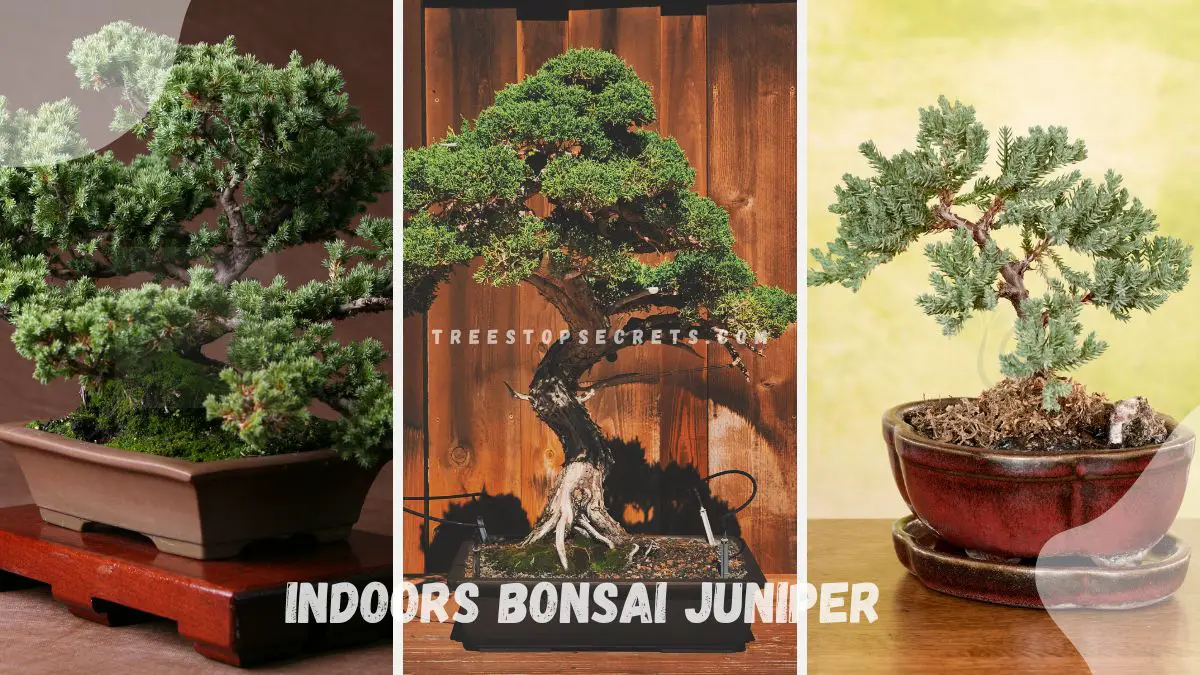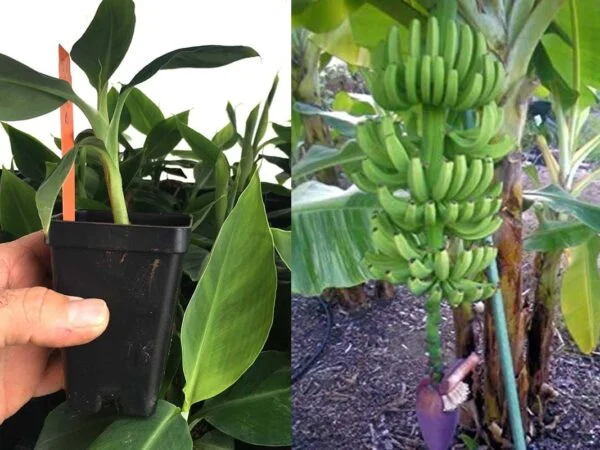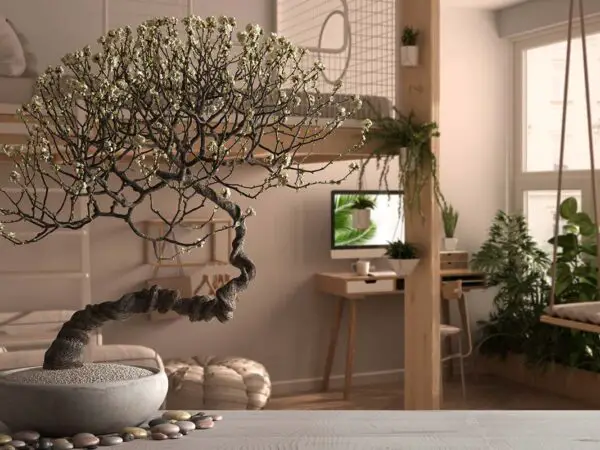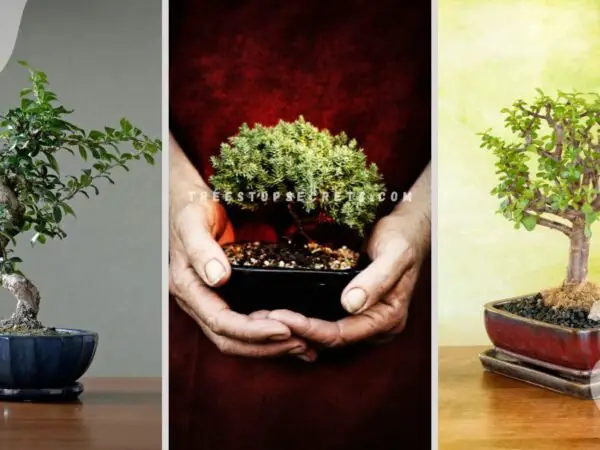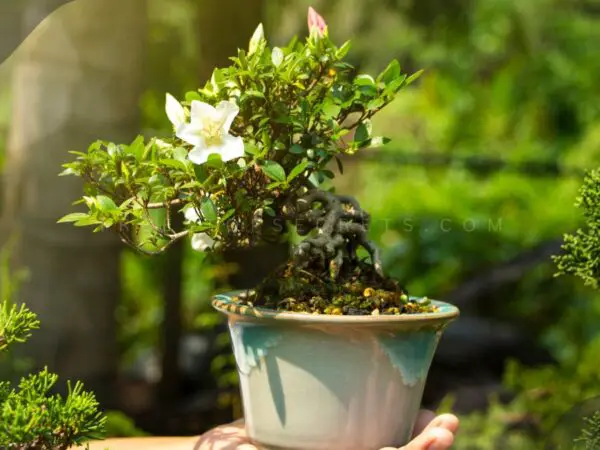Growing a juniper bonsai indoors can be both rewarding and enjoyable. Whether you're a beginner or an experienced bonsai enthusiast, you can successfully cultivate this beautiful and resilient plant inside your home. With proper care, including adequate light, humidity control, and regular watering, your indoor juniper bonsai will thrive, offering a touch of natural elegance to your living space. Let us guide you through the essential steps and tips to ensure your juniper bonsai flourishes indoors.
Juniper bonsai require specific conditions to thrive indoors. Ensure they receive at least 4-6 hours of bright, indirect sunlight daily, which can be achieved through a south-facing window or a grow light. Maintain high humidity levels, ideally between 40-60%, by misting the foliage regularly or placing a humidity tray nearby. Water the bonsai thoroughly when the topsoil feels dry, allowing excess water to drain away. Avoid overwatering to prevent root rot. Lastly, fertilize the juniper bonsai every 4-6 weeks during the growing season with a balanced bonsai fertilizer.
| Care Aspect | Requirement |
|---|---|
| Light | 4-6 hours of bright, indirect light |
| Humidity | 40-60%, mist foliage or use a tray |
| Watering | Water when topsoil is dry |
| Fertilizing | Every 4-6 weeks during growing season |
There’s a lot more to explore about indoor juniper bonsai care, from seasonal adjustments to advanced pruning techniques. Dive into our detailed guides and become a confident bonsai caretaker!
Key Takeaways
- Proper Care: Understand the specific care needs of your juniper bonsai, including watering, humidity levels, feeding, and identification of common issues.
- Watering Techniques: Master detailed watering techniques to ensure the health and vitality of your indoor juniper bonsai.
- Humidity Tips: Implement advice from bonsai masters on maintaining optimal humidity levels for your juniper bonsai's well-being.
- Feeding Guidance: Provide essential nutrients by following feeding guidelines tailored to your juniper bonsai's requirements.
- Issue Resolution: Learn how to identify and troubleshoot common problems that may arise with your juniper bonsai to keep it thriving.
- Pruning and Training: Utilize effective pruning and training techniques to shape and enhance the growth of your indoor juniper bonsai plants.
Understanding Juniper Bonsai Care
Light Needs
When caring for juniper bonsai indoors, ensure they are placed near a south-facing window to receive ample sunlight. If natural light is insufficient, consider using grow lights. Rotate the bonsai regularly for uniform light exposure.
Watering Essentials
Juniper bonsai trees should be watered only when the topsoil feels dry to prevent root rot. Use well-draining soil to avoid waterlogging issues. Be cautious not to overwater, as this can lead to root rot problems.
Humidity Requirements
Maintain low to moderate humidity levels for juniper bonsai. To increase moisture, mist the foliage occasionally. Another option is using a humidity tray filled with water and pebbles to retain adequate moisture levels.
Fertilizing Basics
During the growing season, fertilize juniper bonsai trees with a balanced liquid fertilizer. Apply fertilizer sparingly to prevent nutrient buildup. Consider using slow-release fertilizer for consistent nutrient supply.
Detailed Watering Techniques
Bottom Watering
Submerge the bonsai pot in water to let the soil absorb moisture from the bottom up. This method prevents fungal diseases by avoiding water splashing on foliage. Remember not to leave the pot submerged for too long to prevent waterlogging.
- Pros:
- Prevents water splashing on foliage
- Reduces the risk of fungal diseases
- Cons:
- Requires careful monitoring to avoid overwatering
Spraying Method For even distribution, use a fine mist sprayer on the foliage of your juniper bonsai. It's best to spray early in the morning so excess moisture can evaporate throughout the day. Be cautious not to spray excessively to prevent potential fungal issues.
- Key Tips:
- Use a mist sprayer for gentle watering
- Avoid wetting the foliage excessively
Tips from Bonsai Masters on Humidity
Humidity Tray
Placing a humidity tray filled with water near the juniper bonsai helps maintain adequate moisture levels in the air. This method prevents the bonsai from drying out, especially in indoor environments with low humidity.
Consider grouping multiple bonsai together to create a microclimate with higher humidity levels. By clustering them, the collective transpiration of the plants increases the humidity around each tree, mimicking their natural habitat more effectively.
Hygrometer Monitoring
To ensure optimal growing conditions for your indoor bonsai, use a hygrometer to monitor humidity levels regularly. This device allows you to accurately measure the moisture content in the air surrounding your bonsai trees.
- Pros:
- Helps prevent issues like leaf browning and drying out.
- Promotes healthy growth and vibrant foliage.
- Cons:
- Requires consistent monitoring and adjustment.
- Additional cost for purchasing a hygrometer.
By maintaining proper humidity levels, you can prevent common problems such as leaf drop or pest infestations that often arise in dry indoor environments. The knowledge shared by knowledgeable bonsai experts emphasizes the importance of humidity in nurturing thriving bonsai specimens.
Bonsai enthusiasts value specialized bonsai traders who offer guidance on creating optimal growing conditions for various bonsai varieties. Their expertise ensures that indoor bonsai receive the care they need to flourish and remain healthy.
Feeding Your Juniper Bonsai
Balanced Fertilizer
Feed juniper bonsai with a balanced liquid fertilizer diluted to half-strength. This ensures proper nutrient intake without overwhelming the plant. For example, potted juniper bonsais thrive on this feeding regimen.
Regular Application
Apply fertilizer every 4-6 weeks during the growing season to support healthy growth. This consistent feeding schedule provides essential nutrients for optimal development. Needle juniper bonsai benefit greatly from this routine.
Monitoring Response
Adjust the feeding schedule based on the bonsai's response to avoid overfertilization. By observing how the plant reacts to feeding, you can prevent nutrient imbalances and maintain its health. For instance, green mound juniper bonsai may require less frequent fertilization.
Identifying and Solving Common Issues
Yellowing Foliage
Yellowing foliage on your juniper bonsai can be a sign of overwatering or nutrient deficiencies. To address this issue, check the soil moisture levels regularly and adjust your watering frequency accordingly. Consider providing a balanced fertilizer to tackle any nutrient deficiencies causing the leaves to turn yellow.
Droopy Foliage or Trunk
If you notice droopy foliage or trunk on your juniper bonsai, it might indicate underwatering or root problems. Take time to inspect the roots for signs of rot and make adjustments to your watering routine if necessary. Pruning any damaged or unhealthy roots can help promote new growth and vigor in your bonsai tree.
Pests
Keep a close watch for common pests such as spider mites and scale insects that may affect your juniper bonsai. Promptly treat any pest infestations with insecticidal soap or neem oil to prevent further damage. It's essential to isolate infected bonsai to prevent the spread of pests to other plants.
Pruning and Training Techniques
Pruning for Health
Regularly prune juniper bonsai to maintain shape and promote new growth. Utilize sharp and clean pruning tools to prevent damage. Prune during the growing season to encourage healthy branching and foliage density.
- Pros:
- Promotes new growth
- Maintains shape
- Encourages healthy branching
- Cons:
- Over-pruning can stress the plant
Use sharp and clean pruning tools to prevent infections and damage. Prune during the growing season for optimal results.
Training Techniques
Monitor the wired branches regularly. Utilize wiring techniques to shape the branches and trunk of juniper bonsai. Wire the branches gently to avoid damaging delicate juniper foliage.
- Steps for Wiring:
- Choose appropriate wire thickness.
- Wrap the wire around the branch gently.
- Monitor regularly for any signs of wire cutting into the bark.
- Remove the wire once the desired shape is set.
- Guidance for Monitoring:
- Check for wire cutting into the bark.
- Adjust wire if necessary to prevent damage.
Training techniques are essential to shaping the juniper bonsai effectively. Monitor wired branches regularly to ensure proper growth.
Final Remarks
Mastering the art of caring for your juniper bonsai indoors is a rewarding journey. From understanding its specific needs to implementing precise watering and feeding techniques, you have equipped yourself with the knowledge to ensure your bonsai thrives. Remember, maintaining proper humidity levels, promptly addressing any issues, and skillfully pruning and training your juniper are crucial steps in nurturing its growth and beauty. By following these expert tips and techniques, you can create a flourishing indoor oasis with your juniper bonsai.
Now that you have a comprehensive understanding of caring for your juniper bonsai indoors, it's time to put your newfound knowledge into action. Take the reins and apply these insights to provide the best possible care for your bonsai. With dedication and attention to detail, you can enjoy the serene presence of your thriving juniper bonsai for years to come.
Frequently Asked Questions
Can Juniper Bonsai thrive indoors?
Yes, Juniper Bonsai can thrive indoors if provided with adequate light and proper care. They require bright, indirect sunlight and consistent watering to thrive indoors successfully.
How often should I water my Juniper Bonsai indoors?
Water your Juniper Bonsai when the topsoil feels slightly dry to the touch. Ensure thorough watering, allowing excess water to drain out of the pot to prevent root rot.
What humidity levels are ideal for indoor Juniper Bonsai?
Indoor Juniper Bonsai thrive in moderate to high humidity levels. Aim for around 50-70% humidity for optimal growth. You can increase humidity by using a humidity tray or a room humidifier.
When and how should I feed my Juniper Bonsai?
Feed your Juniper Bonsai during the growing season from spring to fall using a balanced liquid fertilizer diluted to half strength. Fertilize every 4-6 weeks to promote healthy growth and development.
How can I identify and solve common issues with my Juniper Bonsai?
Common issues like yellowing leaves, pests, or root rot can be identified by closely monitoring your bonsai. Treat pest infestations promptly, adjust watering practices, and repot if necessary to address issues effectively.
Image Source: Paid image from CANVA

